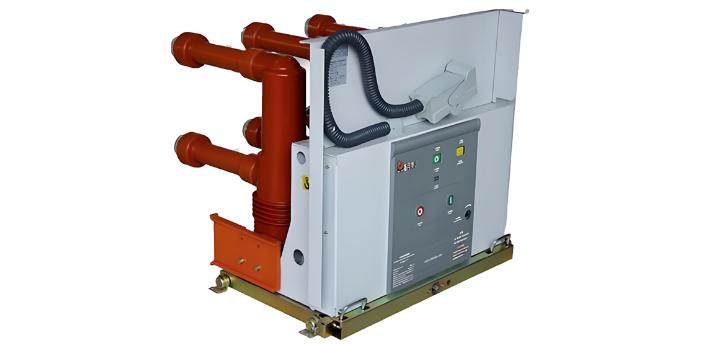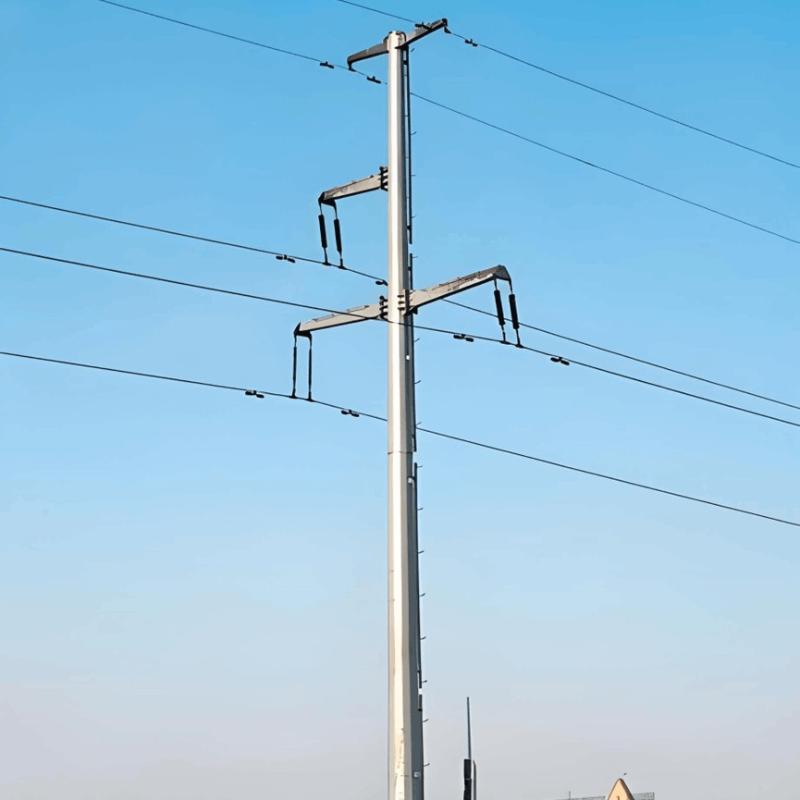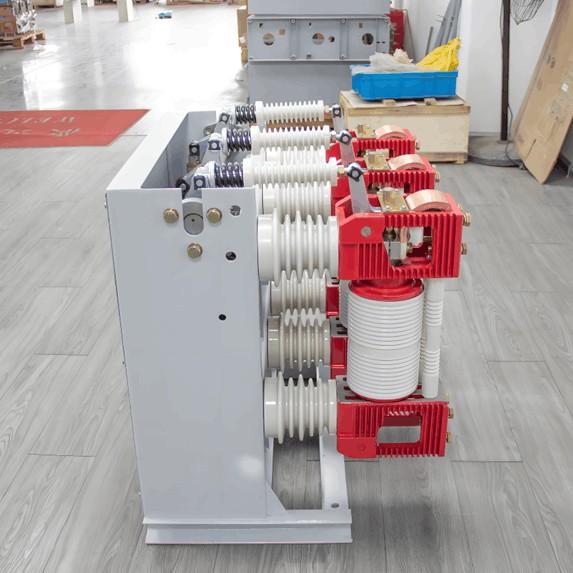01 Preface
In medium-voltage systems, circuit breakers are indispensable primary components. Vacuum circuit breakers dominate the domestic market. Therefore, correct electrical design is inseparable from the proper selection of vacuum circuit breakers. In this section, we will discuss how to correctly select vacuum circuit breakers and common misconceptions in their selection.
02 Interrupting Capacity for Short-Circuit Current Need Not Be Excessively High
The short-circuit interrupting capacity of a circuit breaker need not be excessively high, but should have some margin to accommodate future grid capacity expansion that may lead to increased short-circuit currents. However, in actual electrical design, the selected interrupting capacity of circuit breakers is often too high.
For example, in end-user transformer substations within 10kV systems, the busbar short-circuit current is mostly around 10kA, and in larger-capacity systems, it may reach up to 16kA. Yet, in electrical design drawings, the interrupting capacity of vacuum circuit breakers is frequently specified as high as 31.5kA, or even 40kA. Such high interrupting capacity results in wasted investment. In the above cases, an interrupting capacity of 20kA or 25kA would be sufficient. Currently, however, vacuum circuit breakers with 31.5kA interrupting capacity are in high demand and mass-produced, leading to reduced manufacturing costs and prices, thus becoming more widely adopted.
In electrical design, calculated short-circuit currents are generally on the higher side. The reason is that system impedance and contact resistance in the circuit loop are often neglected during calculation. Of course, the interrupting capacity of circuit breakers must be selected based on the maximum possible short-circuit current. However, the short-circuit protection setting value should not be based on the maximum short-circuit current.
This is because arcs often occur during short circuits, and arc resistance is very high. In design calculations, short circuits are treated as pure metallic three-phase short circuits, assuming no arc and no contact resistance. In actual fault statistics, over 80% of short circuits are single-phase, and arcs are almost always present during short-circuit events. As a result, the actual short-circuit current is much lower than the ideal calculated value.

If the protection setting value is too high, it reduces protection sensitivity or causes failure of instantaneous protection to operate. In engineering practice, the problem is often not that the circuit breaker fails to interrupt, but that the protection element fails to activate due to excessive setting values. By the way, pure metallic three-phase short circuits rarely occur—they only happen when grounding wires are not removed after maintenance before closing the breaker. However, grounding is usually done via grounding switches or grounding trolleys, and interlocking functions are in place, making pure metallic short circuits extremely unlikely.
In electrical construction drawings, it is common to see the interrupting capacity of the main incoming circuit breaker specified one level higher than that of feeder circuit breakers. This is unnecessary. The main breaker handles busbar short-circuit faults, while feeder breakers handle faults in their respective circuits. However, near the load side of a feeder breaker, due to its proximity to the busbar, the short-circuit current is not significantly different from the busbar short-circuit current. Therefore, the interrupting capacities of the main and feeder breakers should be the same.
03 Electrical and Mechanical Life Requirements Need Not Be Excessively High
The electrical life mentioned here does not refer to the number of times a breaker can open and close under rated or partial load current at specified intervals, but rather the number of times it can interrupt short-circuit current without requiring maintenance. There is no national standard for this number. Generally, manufacturers design for 30 such interruptions. Some manufacturers' products can handle 50. In bidding documents for user projects, it is common to see excessively high requirements for the number of short-circuit interruptions. For example, one tender document required a 12kV line protection vacuum circuit breaker to interrupt rated short-circuit current 100 times, with a mechanical life of 100,000 operations and rated current interruption 20,000 times—these requirements are unreasonable.
Excessively high numbers of short-circuit interruptions are unnecessary. A short-circuit fault is a major electrical incident. Each occurrence should be treated as a serious accident requiring root cause analysis and corrective actions to prevent recurrence. Therefore, over the effective service life of a circuit breaker, it will only interrupt short-circuit faults a few times. The higher the system voltage, the greater the damage caused by short circuits, but the lower the probability of occurrence. Thus, a medium-voltage circuit breaker capable of interrupting 30 short-circuit faults is sufficient. Type testing for short-circuit interruption is expensive. For a 12kV vacuum circuit breaker, each short-circuit interruption test currently costs about 10,000 RMB. Conducting excessive tests incurs high costs and is unnecessary.
Does a higher number of successful interruptions mean better interrupting capability? This is another common misconception. The key to vacuum circuit breaker short-circuit interruption testing lies in the first ten operations. As long as the breaker successfully interrupts the specified current in the first ten tests, its subsequent performance is generally reliable. Statistical data from type tests show that the probability of failure is highest during the first ten interruptions and gradually decreases as the number of interruptions increases. After 30 interruptions, the likelihood of failure in subsequent tests is nearly zero. Therefore, being able to interrupt 30 times does not mean it cannot interrupt 50—it simply means further testing is unnecessary.
Regarding the mechanical life of vacuum circuit breakers, there is no need for excessively high requirements. M1 class is originally not less than 2,000 operations, and M2 class is only 10,000. Now, manufacturers are competing in mechanical life—one claims 25,000, another claims 100,000. In bidding processes, participants compare mechanical life values, which is meaningless for distribution-use vacuum circuit breakers. However, in specific applications such as frequent switching of motors, arc furnaces, or automatic capacitor compensation circuits, vacuum contactors are more suitable (SF6 circuit breakers are commonly used for switching medium-voltage capacitor banks). Contactors have mechanical and electrical lives exceeding one million operations (their electrical life is measured by rated current interruption, not short-circuit current). There is no need to compete on mechanical life in circuit breakers.
04 Excessive Requirements for Other Electrical Parameters
The short-time withstand current of a circuit breaker refers to its ability to withstand the thermal stress of short-circuit current during a fault. This is not the same as temperature rise. Temperature rise testing involves passing rated or specified current through the breaker for a long time and ensuring that temperature rise at various points does not exceed specified limits. The short-time withstand current of a circuit breaker is generally tested for 3 seconds.
Within this time, the heat generated by the short-circuit current must not damage the breaker. A 3-second thermal withstand capability is sufficient. The reason is that after a short circuit occurs, time-graded protection may involve intentional delay to ensure selectivity. For time-based protection, a 0.5-second delay between adjacent breakers ensures selectivity. If breakers differ by two levels, the trip delay is 1 second; if three levels, 1.5 seconds. A 3-second withstand capability is already sufficient. However, some users or designers insist on a 5-second thermal withstand capability, which is truly unnecessary.
During the closing process of a circuit breaker, the moving and fixed contacts may bounce. If the bounce time is too long or the three-phase closing asynchronism is large, breakdown and restrike may occur between the contacts. Restrike causes a charge-discharge process in the circuit, increasing the steepness and amplitude of overvoltage. This overvoltage is known as contact restrike overvoltage.
Its hazard may even exceed the current chopping overvoltage of vacuum circuit breakers, threatening the turn-to-turn insulation of transformers and motors. Therefore, the contact bounce time and three-phase asynchronism should not exceed 2ms. Current circuit breaker parameters are manufactured to meet this requirement. However, some users demand values less than 2ms, even requiring no more than 1ms, which exceeds current technical capabilities.
05 Negative Issues Caused by Excessively High Starting Current of Vacuum Interrupters
The starting rated current for medium-voltage vacuum interrupters is 630A. Currently, some manufacturers no longer produce 630A versions, and the minimum starting current has increased to 1250A. This is related to vacuum interrupter manufacturing. However, it brings a series of negative consequences. Because the starting current of vacuum interrupters is too high, vacuum circuit breakers assembled with these interrupters must match the interrupter’s current rating.
As a result, all associated components—such as pole columns, plug-in contacts on pole columns, and fixed contacts in switchgear—must also match the interrupter’s current rating. This leads to severe waste of non-ferrous metal materials in most cases. For example, a 12kV vacuum circuit breaker may supply only a 1000kVA transformer, whose 10kV side rated current is merely 57.7A. However, since the vacuum interrupter starts at 1250A, the circuit breaker must be rated at 1250A. Consequently, all accessories of the breaker must have a rated current of at least 1250A, and the fixed contacts in the switchgear must also be rated at no less than 1250A, resulting in significant waste of non-ferrous metals.
Worse, users or designers insist that the current-carrying capacity of the main conductors in the switchgear must match that of the circuit breaker—i.e., the conductor’s current-carrying capacity is designed for 1250A. In reality, a capacity of 60A is sufficient, and as long as the minimum cross-section of the circuit conductor passes dynamic and thermal stability checks, there is considerable room for saving materials.



























